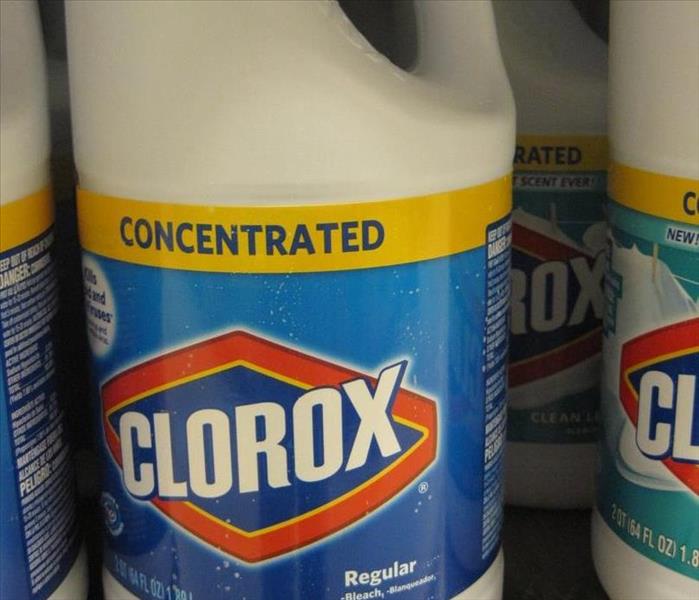Bleach and Anti-Mold Efforts on Commercial Properties
6/2/2020 (Permalink)
When you think about cleaning, does your mind immediately go towards bleach? You are not alone. Bleach is a product that can effectively remove most dirt and contaminants when used appropriately. However, the fungus cleanup operation in your Dale City, Lake Ridge, Woodbridge or Lorton business is not one of those times. Continue reading and learn why bleaching can prove to be senseless towards your anti-mold efforts.
Ineffective in Porous Surfaces
Bleaching products are meant for use in non-porous places. It would not be effective if the mold's roots grow and develop in various porous surfaces such as
- Wood
- Carpet
- Drywall
- Ceiling tiles
Unlike chlorine, the bleaching agent's water component can penetrate the pores. This specific reaction feeds the roots and encourages further growth. Bleaching not only fails to cleanup mold, but it also increases the damage to your commercial location.
Toxic to the Business's Environment
The use of bleach in your fungus cleanup can also leave behind a dangerous aftermath. This substance releases toxic fumes that can cause harm to your employees, your clients and the overall environment. Misuse of this agent can also discolor and damage certain parts of the building. In contrast, mold remediation technicians use safety equipment and tools to keep more effective cleaning measures away from other people and the greater area.
Weakens Over Time
One final drawback with bleaching solutions involves their temporary effects. Chlorine tends to evaporate quickly, even when the product has not left its plastic container. The decrease in chlorine from the cleaner can lead to the chemical's potential failure to eradicate mold incidents. In addition, the leftover water can create greater problems, feeding the fungus you are trying to eliminate.
While bleaching your business's affected location may seem like a good idea for a fungus cleanup, it does not apply to this specific situation. A mold removal specialist, such as our team at SERVPRO of Dale City/Lake Ridge and SERVPRO of Woodbridge/Lorton, can provide you with alternative products to bleaching that are more efficient, cause less damage and endanger fewer lives.






 24/7 Emergency Service
24/7 Emergency Service
